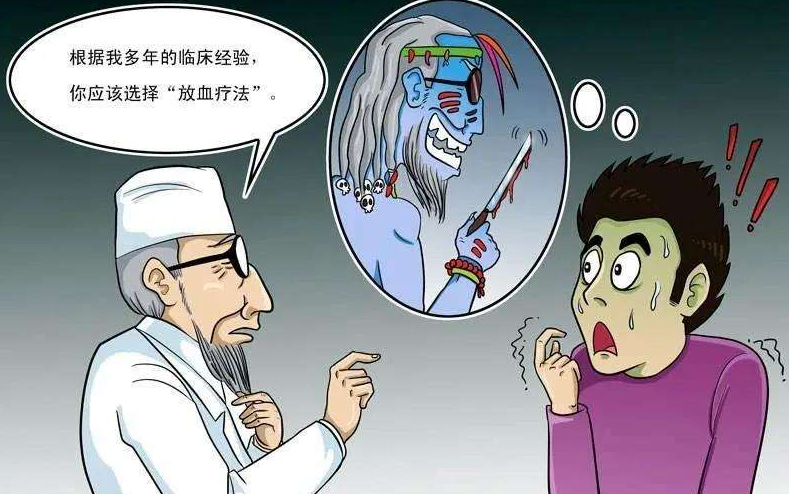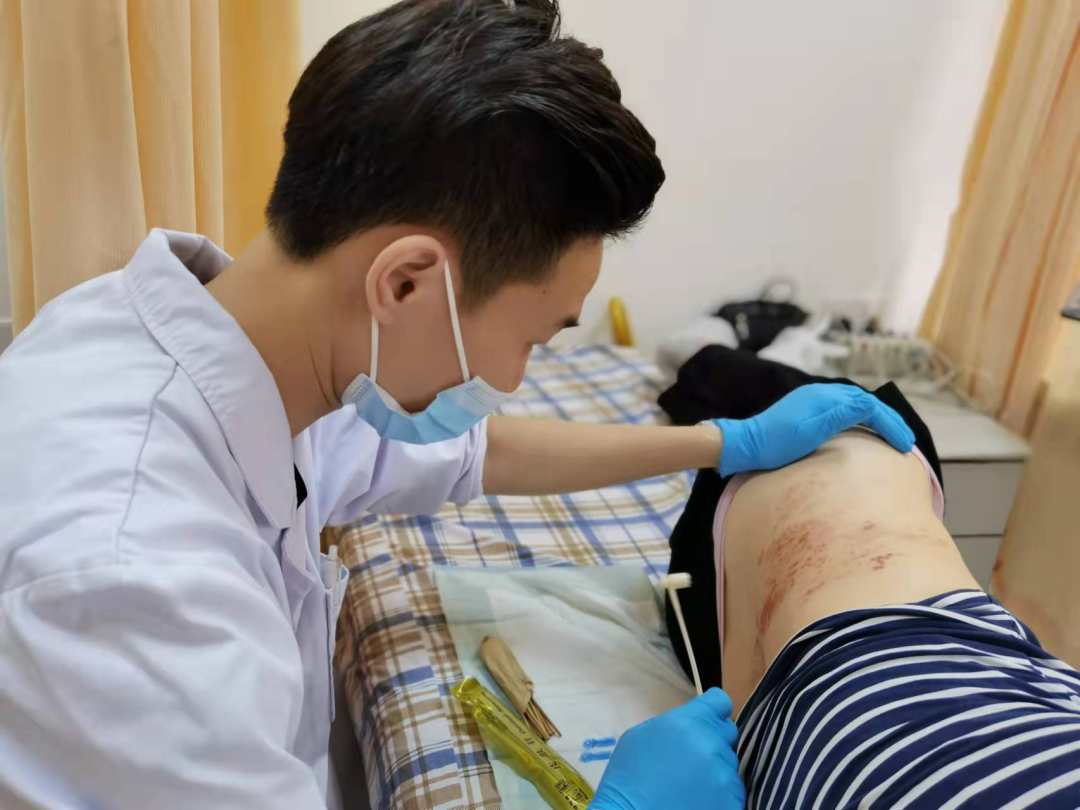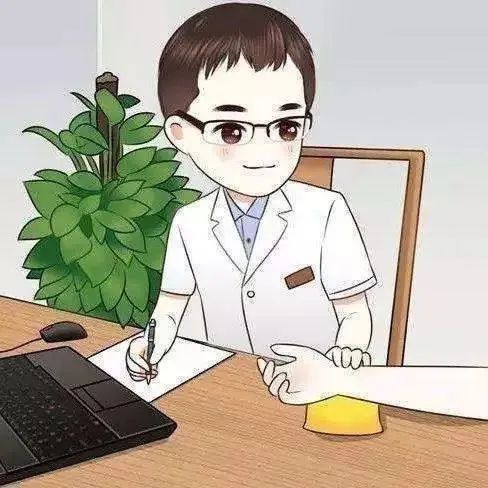Bloodletting and NeedlingWhen a TCM practitioner prepares to perform bloodletting and needling on a patient, many patients often curiously ask:“Are you going to let my blood out?”or “Are you going to use a ‘blood cupping’ technique?”

(The folk practice of “bloodletting therapy” can be quite alarming)
In fact, the TCM practices of “needling”, “bloodletting”, and the contemporary folk practice of “blood cupping” are entirely different matters. In genuine TCM treatment, “needling”, “bloodletting”, and “blood cupping” each have their specific indications, operational methods, and therapeutic effects. Bloodletting and needling have a wide range of applications and are effective for many diseases.
Case Studies of Bloodletting and Needling01Recurrent Gout
Mr. Zhang has a long history of alcohol consumption and recurrent gout attacks. Recently, he experienced acute gout symptoms in his left ankle joint, with local redness, swelling, heat, and pain, which limited his movement. He visited a TCM clinic where the doctor provided external TCM treatments, including bloodletting and cupping, along with electroacupuncture. After treatment, the swelling and pain significantly decreased, and the next day, he was able to walk slowly. After several days of continued treatment at the clinic, he did not experience any further recurrences..
02Acute Suppurative Tonsillitis
Ms. Li’s son had a fever for a week, and Western medicine diagnosed him with acute suppurative tonsillitis. After receiving anti-inflammatory injections and oral medications, his symptoms recurred, and the fever persisted. They sought TCM external treatment for collaborative therapy, which included bloodletting at the Shaoshang (少商) point. That night, his body temperature returned to normal, and after combined TCM and Western treatments, the fever did not recur, and he fully recovered.
03Herpes Zoster
Ms. Zhong experienced an acute outbreak of herpes zoster in her lower back, with pain from the rash for several days, preventing her from sleeping. She visited our clinic for treatment with plum blossom needles combined with bloodletting and cupping. The next day, the pain from the rash gradually alleviated, and she was able to sleep normally.

Plum Blossom Needle Treatment for Herpes ZosterThe Principles of Bloodletting and Needling
The theoretical basis for bloodletting and needling therapy in TCM is rooted in the theories of meridians and Qi and blood. TCM believes that meridians serve to connect the internal organs and limbs, acting as pathways for the circulation of Qi and blood, with the function of connecting the internal organs to the limbs.
The “Su Wen: Treatise on Regulation of Menstruation” states: “When the blood and Qi are not harmonious, various diseases arise.” The “Qian Jin Fang” also states: “All diseases arise from the stagnation of blood and Qi, which cannot be freely circulated.” When the functions of the internal organs and meridians are disordered, diseases can occur, leading to congestion, dilation, or even deformation of the collaterals. Bloodletting can help to unblock the stagnation of Qi and blood in the meridians, adjust the disordered functions of the internal organs, harmonize Qi and blood, and achieve the goal of treating diseases.
Clinical Effects of Bloodletting and Needling
Bloodletting and needling can relieve heat and detoxify, harmonize Qi and blood, invigorate blood and dispel stasis, unblock meridians, reduce swelling and alleviate pain, drain heat and calm agitation, and clear heat and open the orifices, thereby adjusting the internal organs, meridians, Qi, and blood to restore the balance of Yin and Yang and eliminate diseases.
1. Antipyretic Effect: Bloodletting and needling are suitable for conditions of excess Yang heat. When Yang energy is excessive, blood becomes abundant. By letting blood, the evil heat in the vessels is reduced, normalizing the body’s Qi and blood.
2. Analgesic Effect: “When the meridians are open, there is no pain; when there is pain, the meridians are obstructed.” Bloodletting can eliminate the pathogenic factors that are stagnant in the meridians, adjusting the blockages, allowing the meridians to flow freely, and naturally alleviating pain.
3. Detoxifying Effect: The detoxifying effect in TCM refers to the symptoms that arise when the body cannot resist toxic evils, such as “red thread boils” caused by excessive fire toxins, or ulcers, carbuncles, and other conditions caused by toxic evils. Bloodletting can expel the invading toxins from the body through the blood, restoring normal bodily functions and inhibiting the expansion and regeneration of pathogenic evils.
4. Fire Draining Effect: TCM believes that internal heat can lead to various diseases, often manifesting as irritability, mouth sores, limb pain and swelling, irritability, and even fever and confusion. Bloodletting can expel the evil heat along with the blood, making it suitable for various conditions of excess heat.
5. Swelling Reduction: Swelling and pain are often due to Qi stagnation and blood stasis, with obstructed meridians. Bloodletting can directly eliminate the stasis and pathogenic evils in the meridians, achieving the goal of reducing swelling.
6. Itch Relief: Itching is a manifestation of wind evil present in the blood vessels. “To treat wind, first treat the blood; when the blood flows, the wind will naturally disappear.” Bloodletting harmonizes Qi and blood, allowing the blood vessels to flow smoothly, thus eliminating the wind evil and relieving itching.
Indications for Bloodletting and Needling
1. Various diseases caused by blood stasis, primarily characterized by pain, such as headaches, stiff neck, acute lumbar sprains, and acute attacks of bi syndrome (e.g., rheumatism, rheumatoid arthritis, osteoarthritis, gout, etc.).
2. External heat and heat toxin accumulation diseases, such as wind-heat cough, red and swollen eyes, wind-fire toothache, hordeolum, erysipelas, acute herpes zoster, etc.;
3. Skin diseases: such as neurodermatitis, urticaria, alopecia areata, acne, psoriasis, etc.;
4. Acute conditions: such as heat stroke, pediatric convulsions, and manic disorders;
5. Other diseases: such as stroke, facial paralysis, peripheral neuritis, etc.
Special Reminder
This article primarily serves to popularize the TCM specialty therapy of bloodletting and needling. This therapy is a clinical medical procedure, and patients should not attempt it at home or in unregulated places to avoid danger and adverse effects. Patients should seek treatment at a legitimate medical institution’s TCM department and follow medical advice for treatment.



 Editor:Liang JiahaoEditor: Chen QianwenFirst Review:Liu BenjianSecond Review:XU YuanwenThird Review: Chen Guanghui
Editor:Liang JiahaoEditor: Chen QianwenFirst Review:Liu BenjianSecond Review:XU YuanwenThird Review: Chen Guanghui

